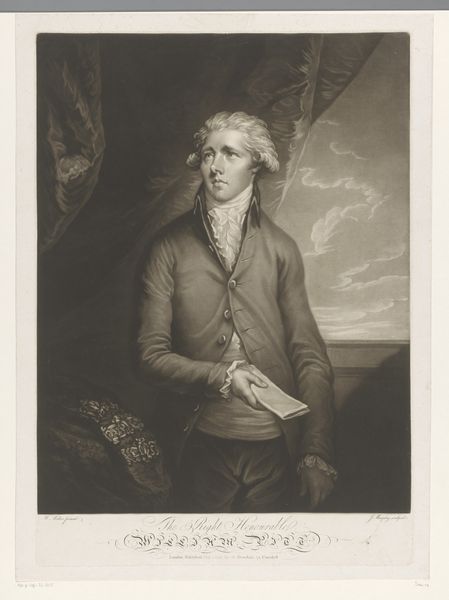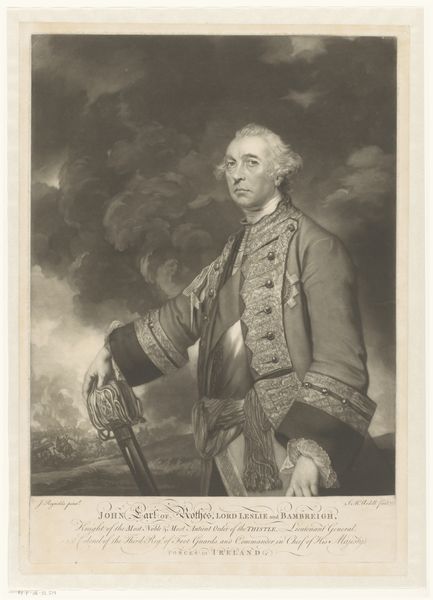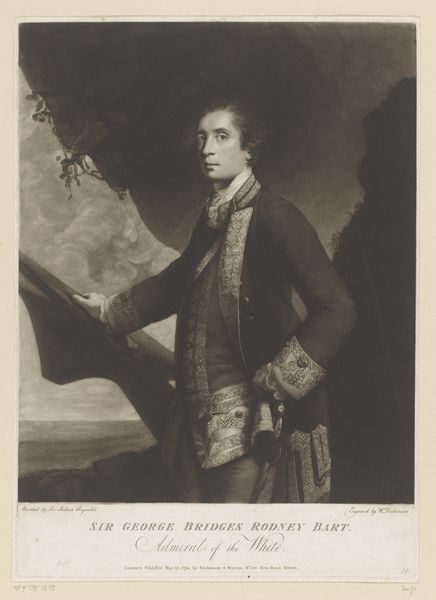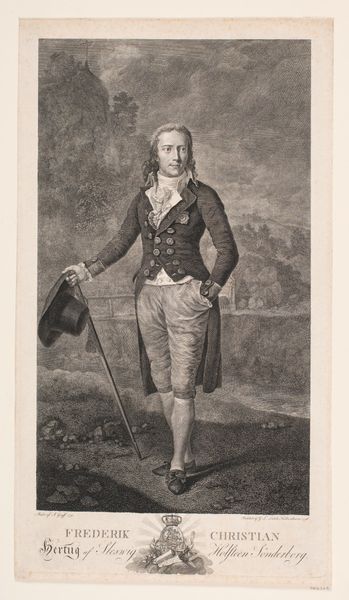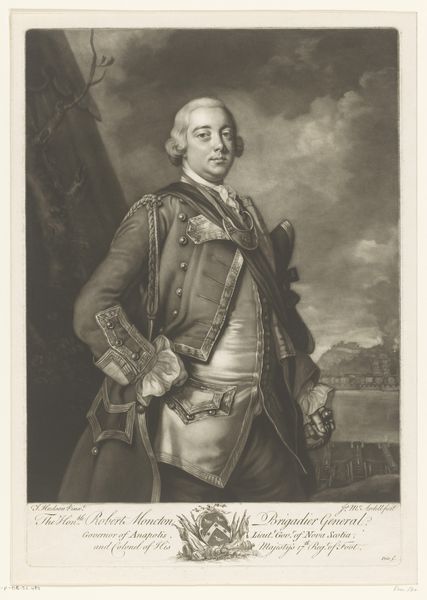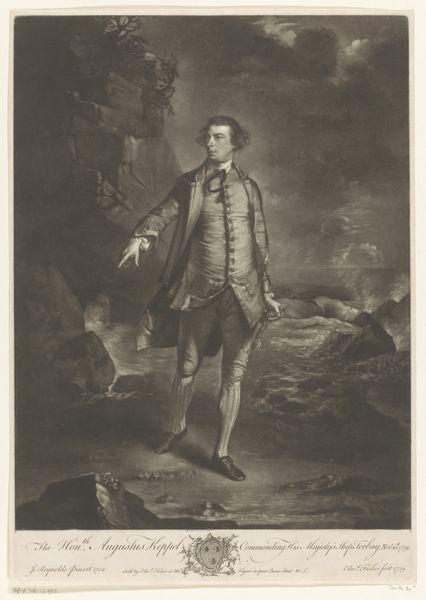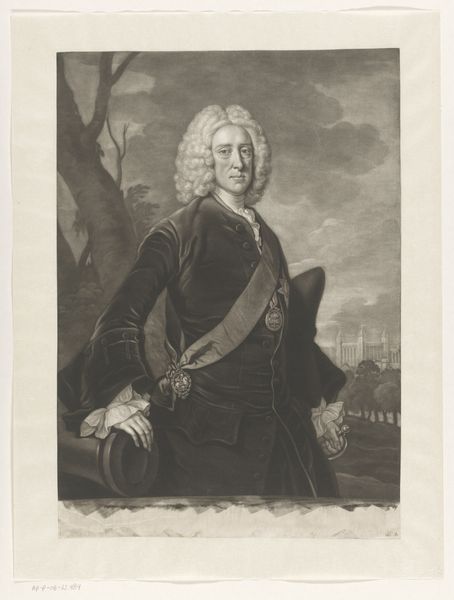
print, engraving
#
portrait
#
neoclassicism
# print
#
charcoal drawing
#
pencil drawing
#
15_18th-century
#
history-painting
#
engraving
Dimensions: height 392 mm, width 313 mm
Copyright: Rijks Museum: Open Domain
Editor: This is a print called "Portret van William Kerr," created sometime between 1762 and 1769 by Edward Fisher. I'm struck by its neoclassical formality, almost like a stage play. What captures your attention when you look at this engraving? Curator: Oh, the drama, absolutely! The controlled pose, the theatrical lighting, it whispers stories, doesn't it? For me, it's the *tension* between the sitter's apparent ease – that almost nonchalant lean against what looks like a rocky outcrop – and the very *real* instrument of war he’s holding. Notice how that gleaming spear-like bayonet mirrors his upright stance. It begs the question: serenity or readiness? What do you reckon? Editor: That’s a fantastic point! I was so focused on the composition I didn't really think about the contrasting emotions. It seems almost like a romanticized view of conflict. But why depict a soldier this way? Curator: Ah, the 18th century! Think "enlightened ideals" meeting "colonial ambitions." This wasn't *just* a portrait; it was carefully constructed propaganda, presenting William Kerr not merely as a soldier, but as a refined gentleman performing his patriotic duty. A hero, yes, but a civilised one! Almost airbrushed, really. Do you find that rings true? Editor: Definitely! Knowing that adds a whole new layer. I initially saw only the artistic elements. Now, I see the carefully crafted message, too. Curator: Exactly! And isn't that the joy of art? One starts with the aesthetic, but a little context and the piece suddenly blossoms with significance. This piece, far from being a simple likeness, offers a tantalising glimpse into the political and cultural theatre of the 18th century. What a story this print now tells! Editor: I agree; I’ll never look at an 18th-century portrait the same way again. Thanks for the insight!
Comments
No comments
Be the first to comment and join the conversation on the ultimate creative platform.
